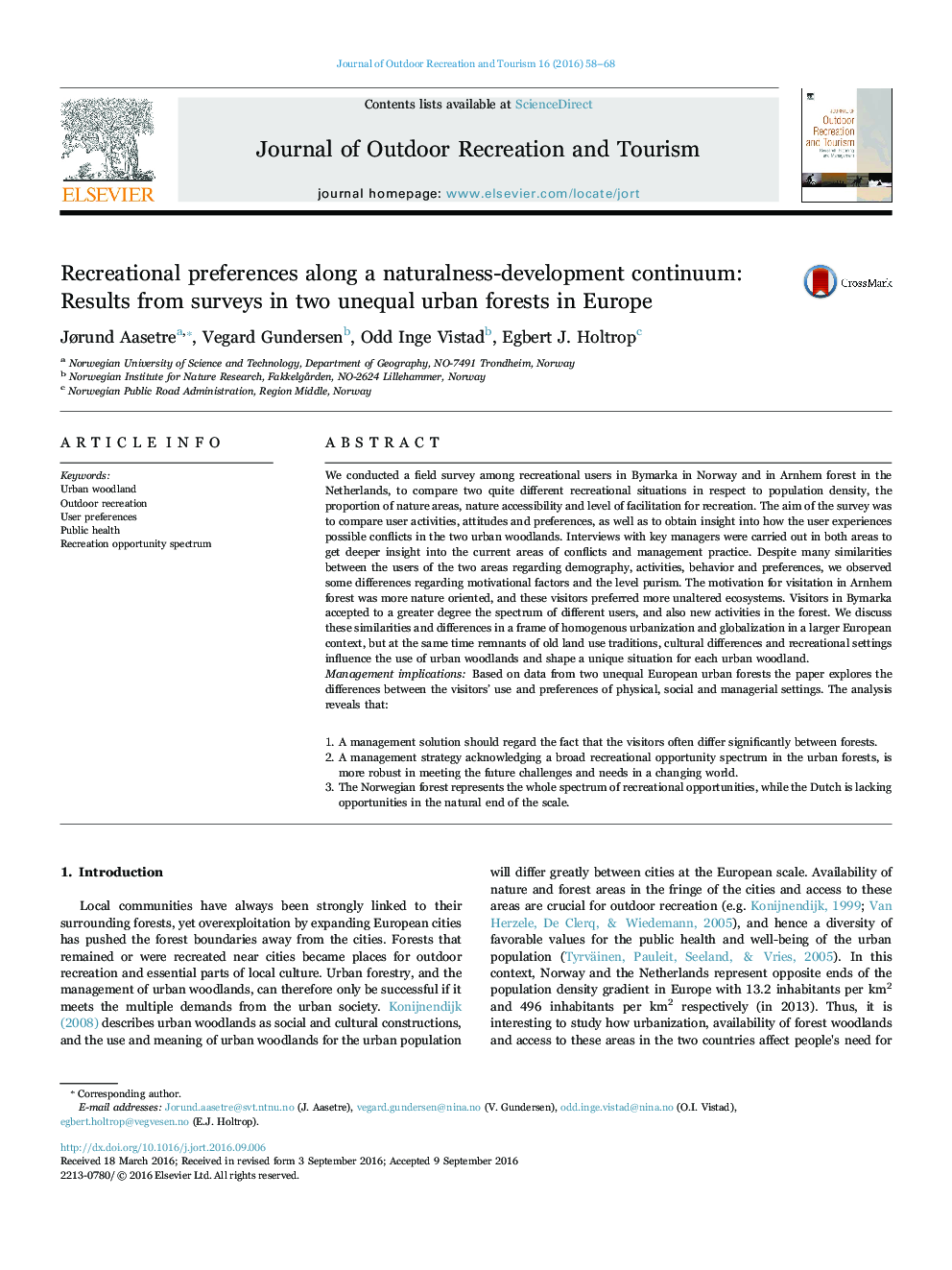| کد مقاله | کد نشریه | سال انتشار | مقاله انگلیسی | نسخه تمام متن |
|---|---|---|---|---|
| 4759913 | 1421755 | 2016 | 11 صفحه PDF | دانلود رایگان |
عنوان انگلیسی مقاله ISI
Recreational preferences along a naturalness-development continuum: Results from surveys in two unequal urban forests in Europe
ترجمه فارسی عنوان
ترجیحات تفریحی در پی یک پیوستگی طبیعی و توسعه: نتایج حاصل از نظرسنجی در دو جنگل نابرابر جنگل های اروپا
دانلود مقاله + سفارش ترجمه
دانلود مقاله ISI انگلیسی
رایگان برای ایرانیان
کلمات کلیدی
جنگل شهری، سرگرمی بیرون از خانه، ترجیحات کاربر، سلامت عمومی، طیف فرصت تفریح
موضوعات مرتبط
علوم زیستی و بیوفناوری
علوم کشاورزی و بیولوژیک
جنگلداری
چکیده انگلیسی
We conducted a field survey among recreational users in Bymarka in Norway and in Arnhem forest in the Netherlands, to compare two quite different recreational situations in respect to population density, the proportion of nature areas, nature accessibility and level of facilitation for recreation. The aim of the survey was to compare user activities, attitudes and preferences, as well as to obtain insight into how the user experiences possible conflicts in the two urban woodlands. Interviews with key managers were carried out in both areas to get deeper insight into the current areas of conflicts and management practice. Despite many similarities between the users of the two areas regarding demography, activities, behavior and preferences, we observed some differences regarding motivational factors and the level purism. The motivation for visitation in Arnhem forest was more nature oriented, and these visitors preferred more unaltered ecosystems. Visitors in Bymarka accepted to a greater degree the spectrum of different users, and also new activities in the forest. We discuss these similarities and differences in a frame of homogenous urbanization and globalization in a larger European context, but at the same time remnants of old land use traditions, cultural differences and recreational settings influence the use of urban woodlands and shape a unique situation for each urban woodland.Management implicationsBased on data from two unequal European urban forests the paper explores the differences between the visitors' use and preferences of physical, social and managerial settings. The analysis reveals that:1.A management solution should regard the fact that the visitors often differ significantly between forests.2.A management strategy acknowledging a broad recreational opportunity spectrum in the urban forests, is more robust in meeting the future challenges and needs in a changing world.3.The Norwegian forest represents the whole spectrum of recreational opportunities, while the Dutch is lacking opportunities in the natural end of the scale.
ناشر
Database: Elsevier - ScienceDirect (ساینس دایرکت)
Journal: Journal of Outdoor Recreation and Tourism - Volume 16, December 2016, Pages 58-68
Journal: Journal of Outdoor Recreation and Tourism - Volume 16, December 2016, Pages 58-68
نویسندگان
Jørund Aasetre, Vegard Gundersen, Odd Inge Vistad, Egbert J. Holtrop,
